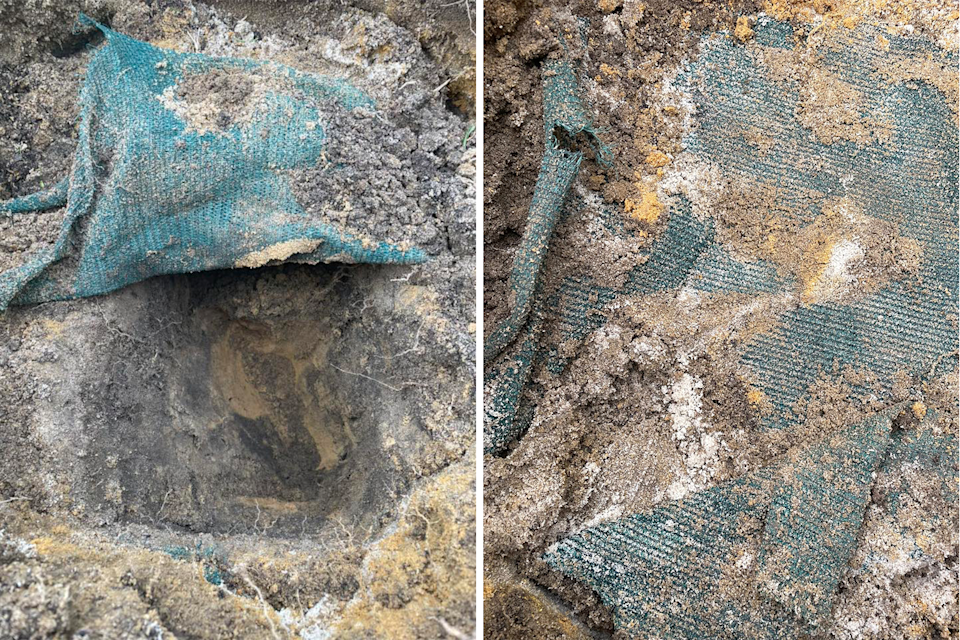When an Aussie woman dug 30cm deep into her backyard, she was surprised to find it lined with plastic shade cloth. After she shared images on social media, over 100 people responded, with some joking there could be a body underneath.
Luckily, it wasn’t hiding anything gruesome, but her discovery does point to a big problem buried beneath thousands of gardens. Shade cloth and black plastic have been used as weed mats for decades before we knew any better, and over time, they break down into tiny pieces called microplastics.
Not only can they kill worms and be absorbed by plants, they can enter the human body when we eat food contaminated by them. Researchers have found them in brains, male genitals, and even breastmilk.
Related: 🩸 ‘Scary’ new disease linked to plastic consumption in Australia

While there was nothing hidden underneath the weed mat, it’s the plastic and the chemicals it could contain that are concerning. Source: Supplied
Dr Scott Wilson, the research director of the Australian Microplastic Assessment Project and honorary senior research fellow at Macquarie University, explained it’s not just the plastics themselves that are a danger to plants and animals.
Each could contain a deadly cocktail of chemical contaminants. “For instance, colour dyes and plasticisers are released as the plastic breaks apart, and they can leach into the soil,” he said.
“The plastics themselves are harmful, but the chemicals are potentially more harmful. Talking generally, they can have a whole range of effects from impacting hormone systems, to reproduction, growth, and development.”
Plastics vary greatly in terms of what sort of chemical cocktail they contain, making it hard to predict what their effect on the environment will be.
Is plastic always a problem in gardens?
If plastic is layered on the surface for a short period it’s unlikely to be dangerous. And when it’s layered deep in the deoxygenated zone of the soil, it poses less of a risk, because it’s slow to break down.
But most weed mats are placed closer to the surface where heat and microbes slowly break them up.
“The whole issue with plastics in the environment is they shed. Once they start breaking down they release microplastics. And that’s the issue, they don’t go away they just disintegrate,” he said.
“They just break up, not down. And they create big issues in your soil long into the future.”
Love Australia’s weird and wonderful environment? 🐊🦘😳 Get our new newsletter showcasing the week’s best stories.


